Darwin Initiative Assignment was one of the complicated assignments I have faced till date and I wasn't surprised when my weird imagination took me to the world of Star Trek. Captains log Stardate [-28] 6184.2 Targ (Targhus targhmey) are boar like creature with sharp tusks, that are endemic to the planet of Kronos and have a very important part to play in the Klingon culture. I might be the first ever person to be writing a conservation strategy involving the Klingon Community in my field. Klingon and Kronos seems too 'OUT OF THE WORLD' to get mentioned in a serious assignment, so I decided to put them as an endemic tribe belonging to the Southern Western Ghats, India, therefore making Klingon the tribals belonging to the Kronos tribe. And now, here's the story! :D Introduction – Western Ghats or the Sahyadri is the continuous stretch of wet evergreen forests from Kanyakumari (the southern tip of India) to Maharashtra, covering 1600Km becoming one of the top 10 biodiversity hot-spots from around the world, being home to around 5000 species of flowering plants, 140 species of mammals, reptiles and amphibians, majority being endemic to this stretch of forests. Western Ghats is also home to a number of Tribals or Adivasis. Klingon are indigenous tribals belonging to the Kronos tribe in Southern Western Ghats. Klingon are agrarian tribals known for their expertise in Traditional knowledge of endemic medicinal plants. Agriculture and cattle rearing are their means of livelihood. The traditional knowledge of tribal people is important for the conservation of bio-diversity. Traditional ecological knowledge deals with a wide variety of aspects including animal behaviour and plant properties. Targs (Targhus targhmey) are boar like beast with sharp tusks that are endemic to the Western Ghats and have a very important part to play in the Kronos culture. On a general perspective, the conservation of wildlife in the Western Ghats has been nearly effective without the participation of indigenous communities. Tribals For Nature (TFN) is known for their active involvement from the community side in the conservation of endangered species in the Western Ghats. This organisation, with their previous successful conservation story on the captive breeding of Qagh, a serpent that was critically endangered due to illegal hunting for bush-meat and leather, will be working with the Klingon to conserve the remaining handful of Targs in the Western Ghats. Background – Targ (Targhus targhmey) is one of the keystone species in its habitat as it is responsible for the germination and seed disposal of many medicinal plants, which are used by the Kronos tribe. Targs are also known as the ploughers of the land, scavenging for fruits and seeds, they plough the land making it habitable for other plants to germinate. Towards the 1990’s the population of Targs were down to a 1800 animals, which is around 80% decline within the past 4 decades. Targs have a cultural importance in the life of the Klingon. Targs are hunted for their skull, which is worn on the Klingon head during their cultural ceremonies and also, Targs are a delicacy by tradition. Hunting of Targs for cultural as well as delicacy, has indirectly affected the Klingon with low availability of medicinal plants. With the disappearance of the Targs, certain medicinal plants like Ageratum conyzoides, Aglaia roxburghiana and so on used by the Klingon to cure Venomous snake bites/scorpion bites and diseases like Diarrhoea and so on, also started to disappear. Project Design – This research project will deal with the conservation of the schedule 1 species (Indian Wildlife Protection Act 1972), Targ (Targhus targhmey) with the active involvement of the Kronos tribe. Data show that Klingon hunting Targ as delicacy is just to continue their tradition started by their ancestors. TFN with their conservation achievements, will be educate the Klingon on the harmful effects of over exploitation of Targ for meat and cultural ceremonies . The project will deal with environmental education concerning the need to Conserve Targ. It will also deal with capacity building and training of Klingon and other local people in the captive breeding and conservation of Targ along with the conservation of endangered medicinal plants. This will help TFN to carry our practical conservation, sustainable use for the conservation of the Targ, Kronos and Biodiversity. TFN will also focus on the long-term conservation of the bio-diversity by training the local people as well as the tribals in the captive breeding of Targ. This project is designed to strengthen bio-diversity; its long-term goal is to bring back the Targ population to a self-sustaining level and also to generate alternative income/livelihood for the locals and tribals by sustainable use of resources. As a sub-goal, this project will also deal with the recovery of Shola grasslands, which has been severely exploited due to the uncontrolled grazing of the cattle by Klingon. This project also looks into conserving and rehabilitating the lost Shola grasslands by selective grazing and agroforestry. Laying trust on the positive outcome of the research, this project also aims in repopulating the medicinal plants like Ageratum conyzoides, Aglaia roxburghiana so on, by reseeding, as they are an integral part of the Klingon race and pharmacology. Conclusion - With the successful establishment of this project, local people and Klingon will have another source of livelihood apart from agriculture and cattle rearing. In the long run with a sustaining population of Targ (Targhus targhmey), other important wildlife interactions will be established which would be vital in converting the now, non-protected area into a protected area or Targ sanctuary. The re-establishment of viable population of Targ in the wild will be culturally helpful for Kronos and an alternative will be suggested, avoiding the future hunting and exploitation of Targ by Klingon for their cultural use. This project deals with The Convention on Biological Diversity (CBD) Strategic Plan for Biodiversity 2011-2020; With the theme “Living in harmony with nature” this project will work on building and conserving the traditional knowledge, innovations and practices of indigenous and local communities relevant for the conservation and sustainable use of biodiversity, and their customary use of biological resources, at the local levels through the conservancies. ______________________________________________________________________________________
So, there ends my Klingon story. It is definitely Klingon with some bad ass research, training, capacity building, species and ecosystem approach. lol. This imaginative project shows nothing more than the fantasy of a Star Trek (Trekkie) fan's conservation biology life. The greatest experience I've ever had on field was the expedition into the Western Ghats of Kerala, Karnataka and Tamil Nadu with Deepak, a Ph.D student from Wildlife Institute of India in search of the Endemic turtles of India. It all started from Top-Slip in Annamallai Tiger reserve, Pollachi. It was Deepak and I in a Maruthi Gypsy, travelling to different sampling spots in the Western Ghats. November 2010 – We had finished off all our sampling spots in Karnataka and had decided to start off the ones in Tamil Nadu. We sorted out the coordinates and found that Rajpalyam (Rajapalayam) near Srivilliputhur was our next destination. Rajapalayam is a god blessed town situated in the foothills of the Western Ghats, around 30Km away from Srivilliputhur. The place is known for its endemic, and supposedly India's only Hound (Dog), the Rajapalayam hound. We were happy to see a few of them while we went shopping (some vegetables and other stationaries) for our 3-4 days on the field. We packed our bags and started our journey to the sampling spot, the next day. We had to drive a few kilometers, to meet the Ranger and a few assistants who was supposed to help us on field. The weather was dry and the marsh terrain was surprisingly even with a few Fan throated lizards (Sitana ponticeriana) running around. We had nearly 10-12 Kg on our back (each) and our sampling spot seemed to be nearly 15Km uphill at around 850m ASL. The environment started to cool down as we gained altitude, and the even marsh terrain was replaced by the uneven evergreen rainforest. It took us around 4 hours to reach our destination. The place was beautiful with a farm house in the middle of an estate which is surrounded by thick evergreen rainforest. The farm house was small and furnished. They had a wooden bench outside on the veranda and a pole to which a cow was tied, a radio that operates 24*7 and no electricity. The only thing that produced electricity was the generator that ran on kerosene, but worked only for an hour, a day. We started our field work the next day and we began by exploring the estate and its adjoining forest areas. The estate manager had warned us about a plant called 'Aanai viratti' (which means “That scares the crap out of elephants”) and asked us to avoid them completely. Deepak showed me what it was and why it should be avoided. Aanai Viratti or Devil's Nettle is a variety of nettle plant, but doesn't have any specific attributes like their other relatives. They look like any other normal plant. The minute hairs (which when brushed, irritates) appear only when you are really close to it. These plants grow to the size of a small tree and are found in plenty on forest openings where they get plenty of sunlight.We started our walk through the estate and we avoided almost all the visible DNs* (*Devil's Nettle) until we reached this specific area. The forest floor was covered with vegetation and the estate plants were as tall as me. We made our route through them and started walking towards the sampling spot, shown in our GPS. After a while, I started to feel a bit irritated by a burning sensation on my left leg (around the shin area). I stopped for a while to check what it was. Scratching the part, I continued walking trying to catch-up with Deepak who was already way ahead of me. The burning sensation started to increase as I walked forward and so did my tendency to scratch. I began to stop frequently to scratch, which made me feel so uncomfortable. The night was horrendous. The burning sensation was at its peak and I was trying my level best not to scratch the itch. Fever caught hold of me above everything and my appetite to eat gradually came down. Just to satisfy my hunger, I had a few Chapaties and went to sleep. Sleep evaded me and nightmares started to invade, every time I closed my eyes. All of a sudden, I felt nauseous. It was cold outside and I ran outside to nauseate. Feeling better, I returned back to the bed. The day seemed much promising as my fever subsided. I felt so weak, as I nauseated a few times the previous night. Deepak asked me to take rest as he got ready for the field work. I shifted myself from the room to the veranda and found myself comfortable basking in the sunlight on the bench outside. Making my sweatshirt as my pillow, I decided to take a nap. The Ranger was at home and he took the radio outside so that I don't feel bored. I wouldn't be exaggerating if I say that the radio actually saved my life. A.R. Rahman (2 time Academy award winner) is one of those few whom I admire, and listening to his song gives me that blast of energy from the inside. Lucky me, it was the time when the film ‘Enthiran/Robo’ was released and all that was aired on the FM was about Enthiran. I love Rajnikanth and that too might have added to, how good I was feeling listening to the radio. The day was awesome as the radio repeatedly played all the songs from the movie Enthiran, plus certain old songs of A.R. Rahman.
I regained my appetite to eat and did have a good lunch that day. By evening, I was feeling so recovered until I felt this tremor inside my tummy. God damn, above all the high fever and the nausea, I'm having diarrhea and that too in type 7* (*According to the Bristol Stool Scale). It is complete exhaustion by the end of the day. We packed our bags and got ready to reach back to civilization the next morning. Deepak did give me a few pills that would control the state of my stool, so that I can easily trek back down with the rest of the guys. 15Km seemed too far and it took us around 5 hours to get back down. All the weight on our back, plus my bad health condition just made it worse and by the time we reached the foothills (Where we had kept our vehicle) I was completely exhausted. My whole body was numb and I asked Deepak to take me to a hospital ASAP. 45 mins ride to the nearest hospital, 4 bottles of Intravenous drips and a few days of rest was the result. It has been nearly 7 months now and I still get Goosebumps thinking of the situation I had been into. Reading the recent article by Janaki Lenin is the inspiration to write this entry. And to conclude, this is my message to the people who do regular treks - "Devil's Nettle is one of those plants you don't want to mess with. “ Spiders are ancient creatures with an evolutionary history over 350 million years. Abundant and widespread in almost all ecosystems, they constitute one of the most important components of global biodiversity. They are also known to control the pests in different agro landscapes, thereby possessing great importance in the eco-system. Although there are more than 1400 species of spiders described from India, studies on spiders is still at grass root level.
It all started as a mere statement when I visited ARRS back in October 2010. Neeti Mahesh, greatly interested in spiders, suggested creating this basic inventory on spiders around ARRS. Being rookies in arachnid studies, didn’t hold us back and after having finally gotten around to writing a proposal for the checklist, I and my friend Gokul Vinayan arrived on February 22 and kick started a preliminary recce over a week. We decided to use the five days on field to spot and identify dominant or common species during this time of the year around ARRS. With plenty of help from ARRS team, especially education officer Naren Sreenivasan, we could identify over 30 species of spiders in less than the duration of our stay. Spider diversity varies by seasons, ie., dominancy of spider species in a particular environment changes by season. Certain species of spiders are found during the summer in a particular environment, while some others are dominant during the monsoons or winter. Plans are afoot to come back and improve upon the checklist after a few months, which will be the start of the monsoons in Agumbe, forcing different species of spiders to occupy the environment. Herp Dossier 6
This month we take a look at our favourite animal ‐ The Gharial. Here’s something about them that you probably need to know. Gharial (Gavialis gangeticus) • Gharials are the last surviving species of the family Gavialidae • One of the largest of all crocodilians growing up to nearly 6m •They get their name from the bulbous growth on the tip of adult male’s snout which in Hindi is called a ‘Ghara’ • They predominantly feed on fish •They are one of the most aquatic of the crocodilians with weak front legs that makes movement on land more cumbersome for them •They are critically endangered with only 200 adults in the wild •Gharials are now extinct in Bhutan, Bangladesh, Myanmar, Pakistan •They are now found only in a few protected areas of North India and Nepal •Habitat loss and illegal fishing are the two largest threats to the survival of Gharials •For more information on Gharial, visit http://www.gharialconserva9on.org/ •GCA – Gharial Conservation Alliance (Estd. 2007) a group of scientists, experts and stakeholders working for the conservation of the species through fund‐awareness raising campaigns, research and captive breeding Spiders are ancient creatures with a history going back over 350 million years. They are abundant and widespread in almost all ecosystems and constitute one of the most important components of global biodiversity. Spiders have even greater importance rather than being an exclusive predator. They feed on pests like cockroaches, silverfishes, mosquitoes etc. They are also known to control the pests in different agro ecosystems. Although there are more than 1400 species of spiders described from India, the study on spiders is still in its grass root level.
It all started as a mere statement when I visited ARRS back in October 2010. Neeti Mahesh was one of those people who were really interested in spiders and who gave the idea of creating this basic inventory on spiders found in and around ARRS. After a few months, I decided to sit down and write a proposal to ARRS to get the permission to carry out the Spider checklist study. Fortunately, I got the permission to carry out the study, even though I’m a rookie in it. I and my friend Gokul Vinayan decided to kick start the study by being on the field for a week. We reached at Agumbe (ARRS) on 22nd morning and started our work on the field. Spider diversity varies by seasons, ie. Dominancy of spider species in a particular environment changes by season. Certain species of spiders are found during the summer in a particular environment, while some other species are dominant during the monsoons or winter. We decided to use this 5 days on field to spot and identify the dominant or common species that are found in plenty during this time of the year, in and around ARRS. With plenty of help from ARRS team (especially Naren Sreenivasan) we could identify over 30 species of spiders in less than 5 days of time. In order to get the complete number of spiders found in and around Agumbe, it is needed to carry out this study throughout the year. We have planned to come back and improve on this checklist study after a few months, which will be the start of the monsoons in Agumbe, forcing different species of spiders to occupy the environment. Fauna of Hill Palace is the end result or the product of the Fauna diversity study which was conducted inside the premises of Hill Palace. Hill Palace is the prestigious seat of the Cochin Rajas, which now is a Centre of tourist attraction for its heritage building, garden, museum and study centre. The faunal diversity study started in the mid 2009 and we submitted the initial checklist by the end of November. We got permission to improve on our study and was asked to write a book based on it. The book contains brief description of a variety of fauna, right from Spiders, butterflies, birds, amphibians and Reptiles. We have also tried our best to make it the best field guide available to understand the basic and most commonly found fauna of Cochin. You can order the book by sending an M.O (Money Order)
Book Name :- The Fauna of Hill Palace Authors :- Sandeep Varma and Gokul Vinayan Registrar, Centre for Heritage Studies, Hill Palace, Tripunithura - 682301 Ernakulam District, Kerala. Ph - 0091484-2776374, 0091484-2779102 The book costs only Rs.100/- plus postage charges (I have no idea how much the postage charge will be). If you have any inquiries, you can call up the numbers given above or call me - +91 903-789-8766. Heterometrus scaber is one of the least studied scorpions under the genus Heterometrus. I found this adult female from inside the premises of Hill Palace while we were doing our 'Fauna of Hill Palace' faunal diversity study. The adult female was gravid when I found it and was placed in a well maintained terrarium. The specimen did react good in captivity and towards the end of may2010, the female was seen digging burrow into the loose sand and no longer used the wooden bamboo plank as its hide. She was rarely seen outside except while feeding.
The gestation period of Heterometrus species is 8-12 months (The Biology of Scorpions - Gary A. Polis) while some families exhibit lesser period. I have observed very complex maternal care and hatchling interaction and I believe this complex behavior is directly proportionate to its gestation period. Most of the scorpions, especially Heterometrus species give birth to live scorplings and towards the end of June2010, she gave birth to a litter of 36 scorplings (The Biology of Scorpions - Gary A. Polis). The adult female carried the scorplings on her back for several weeks until their first molt. Several interesting observations were made like,
Abstract: This is the first effort to create an initial checklist of spiders found inside the premises of Orange County Resort and its adjoining Dubare reserve forest. This list is compared with the list in Spiders of India (University press – P.A Sebastian, K.V Peter) ,Indian Spiders (Updated Checklist 2005 – Manju Siliwal, Sanjay Molur and B.K. Biswas) and Spiders in Mangalavanam, an ecosensitive mangrove forest in Cochin, Kerala, India (Araneae)(P.A Sebastian, S. Murugesan, M.J. Mathew, A.V. Sudhikumar and E. Sunish). A preliminary study was done to see the spider diversity inside the 300 acres premises of Orange county Resort and its plantation and its adjoining areas inside Dubare Reserve Forest in Siddapur, Coorg. Coorg is famous for coffee and pepper plantation. The initial survey was conducted by the most common field technique, sighting and identification. The survey yielded 52 species of spiders belonging to 40 different genera and 17 different families. Please contact me for the paper ([email protected])
|
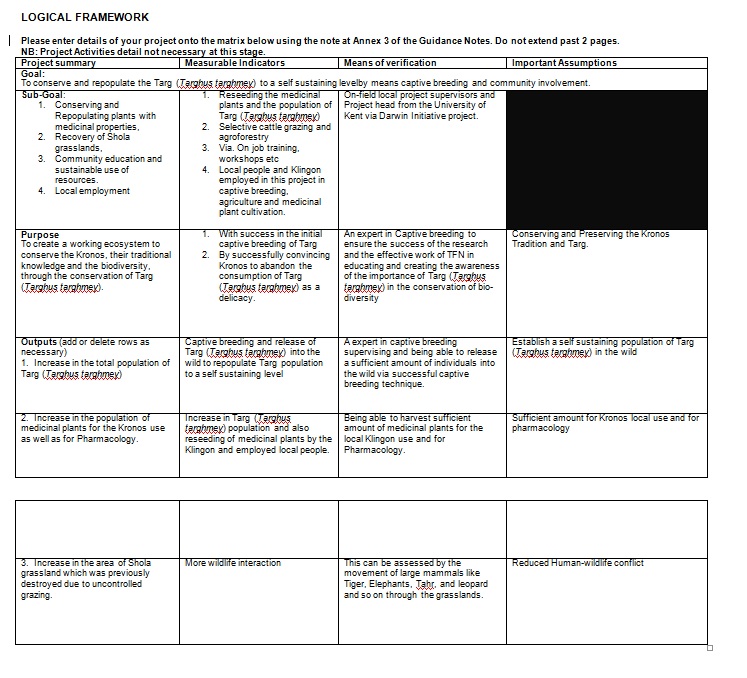
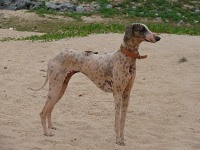
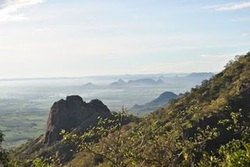
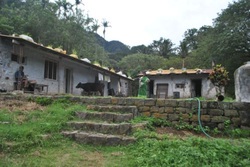
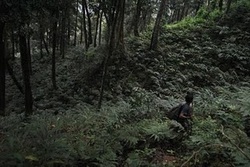

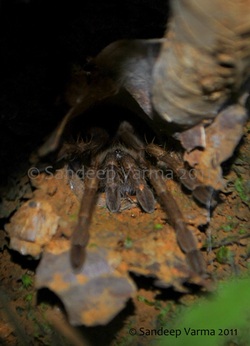
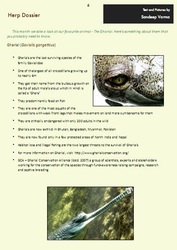
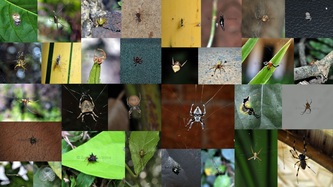
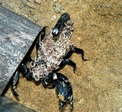
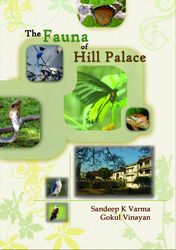


 RSS Feed
RSS Feed
